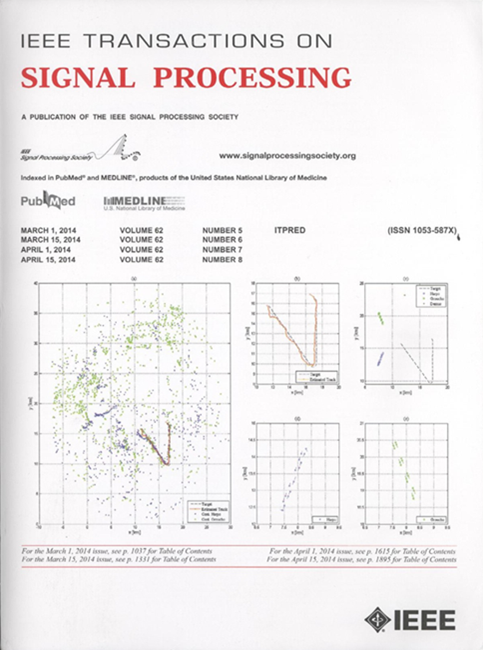快速实时任意波形生成使用图形处理单元
IF 5.8
2区 工程技术
Q1 ENGINEERING, ELECTRICAL & ELECTRONIC
引用次数: 0
摘要
实时任意波形生成(AWG)在各种工程和研究应用中都是必不可少的。本文介绍了一种使用NVIDIA图形处理单元(GPU)和市售高速数模转换器(DAC)卡的新型AWG架构,两者都运行在台式个人计算机(PC)上。GPU为AWG加速了“令人尴尬”的数据并行加性合成框架,DAC在模拟域中高速重建生成的波形。AWG软件是使用NVIDIA开发人员友好的计算统一设备架构(CUDA)运行时应用程序编程接口(API)开发的。与中央处理器(CPU)相比,该架构使周期性射频(rf)任意波形的计算速度提高了586倍。我们还展示了动态控制多音射频波形的两种不同途径,我们通过在多音波形中啁啾单个单频音调来表征。一种途径提供任意同时啁啾1000个单独的奈奎斯特限制单频音调,采样率为每秒280兆样本(MS/s),有限时间持续时间为35毫秒。另一种途径可以同时发出340个nyquist限制的单频音调,速度为50毫秒/秒,或者55个音调,速度为280毫秒/秒,持续时间任意。使用后一种途径,我们通过在多达100个音调的组中鸣叫所有组成音调来展示对5000音调和10,000音调波形的控制。该AWG架构设计用于创建单个中性原子或分子的大型无缺陷光镊阵列,用于量子模拟和量子计算。本文章由计算机程序翻译,如有差异,请以英文原文为准。
Fast Real-Time Arbitrary Waveform Generation Using Graphic Processing Units
Real-time arbitrary waveform generation (AWG) is essential in various engineering and research applications. This paper introduces a novel AWG architecture using an NVIDIA graphics processing unit (GPU) and a commercially available high-speed digital-to-analog converter (DAC) card, both running on a desktop personal computer (PC). The GPU accelerates the “embarrassingly” data-parallel additive synthesis framework for AWG, and the DAC reconstructs the generated waveform in the analog domain at high speed. The AWG software is developed using the developer-friendly compute unified device architecture (CUDA) runtime application programming interface (API) from NVIDIA. With this architecture, we achieve a 586-fold increase in the speed of computing periodic radio-frequency (rf) arbitrary waveforms compared to a central processing unit (CPU). We also demonstrate two different pathways for dynamically controlling multi-tone rf waveforms, which we characterize by chirping individual single-frequency tones in the multi-tone waveforms. One pathway offers arbitrary simultaneous chirping of 1000 individual Nyquist-limited single-frequency tones at a sampling rate of 280 megasamples per second (MS/s) for a limited time duration of 35 ms. The other pathway offers simultaneous chirping of 340 individual Nyquist-limited single-frequency tones at 50 MS/s, or 55 individual tones at 280 MS/s for an arbitrary duration. Using the latter pathway, we demonstrate control over 5000-tone and 10,000-tone waveforms by chirping all of their constituent tones in groups of up to 100 tones. This AWG architecture is designed for creating large defect-free optical tweezer arrays of single neutral atoms or molecules for quantum simulation and quantum computation.
求助全文
通过发布文献求助,成功后即可免费获取论文全文。
去求助
来源期刊

IEEE Transactions on Signal Processing
工程技术-工程:电子与电气
CiteScore
11.20
自引率
9.30%
发文量
310
审稿时长
3.0 months
期刊介绍:
The IEEE Transactions on Signal Processing covers novel theory, algorithms, performance analyses and applications of techniques for the processing, understanding, learning, retrieval, mining, and extraction of information from signals. The term “signal” includes, among others, audio, video, speech, image, communication, geophysical, sonar, radar, medical and musical signals. Examples of topics of interest include, but are not limited to, information processing and the theory and application of filtering, coding, transmitting, estimating, detecting, analyzing, recognizing, synthesizing, recording, and reproducing signals.
 求助内容:
求助内容: 应助结果提醒方式:
应助结果提醒方式:


